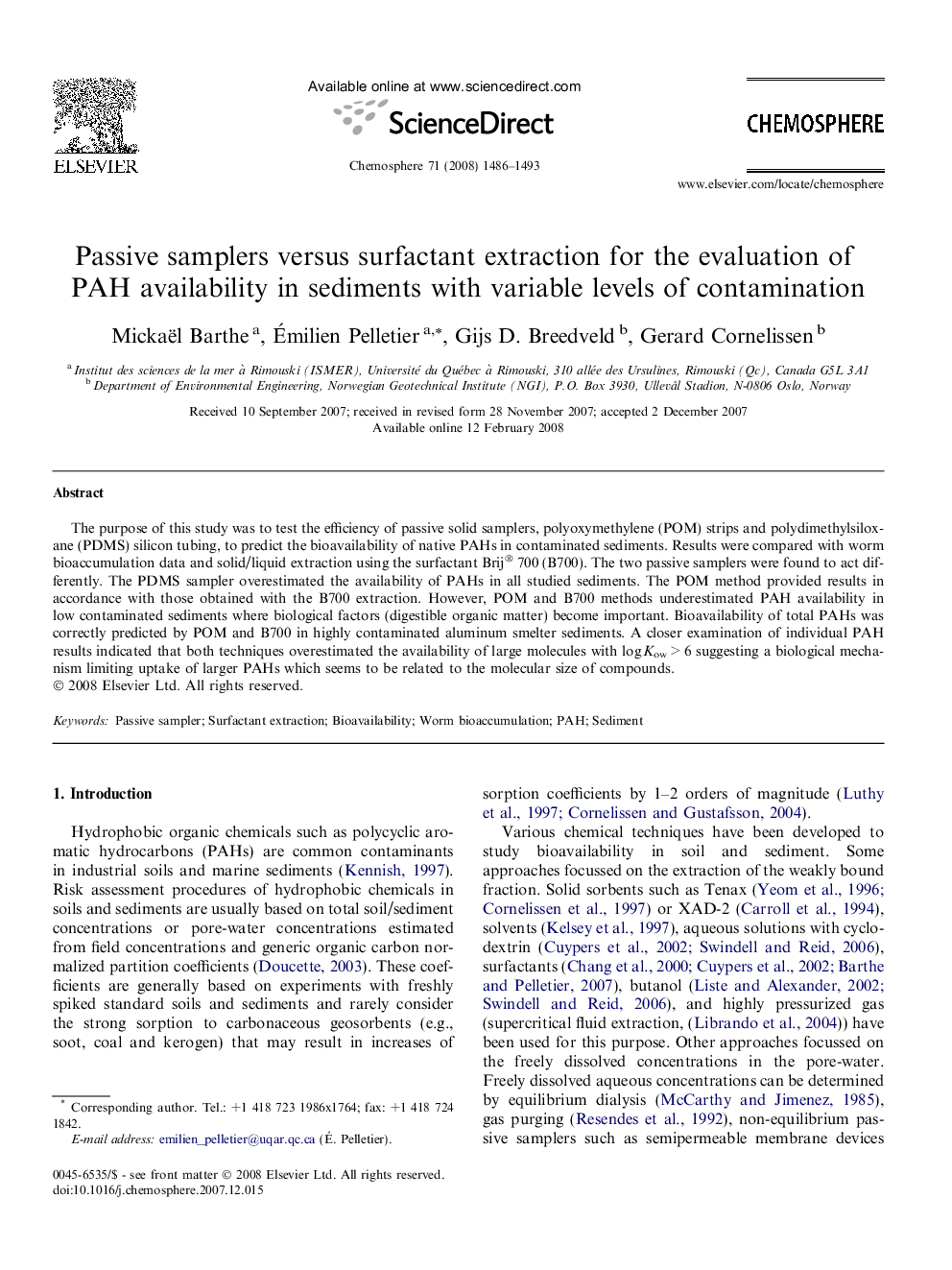| Article ID | Journal | Published Year | Pages | File Type |
|---|---|---|---|---|
| 4414498 | Chemosphere | 2008 | 8 Pages |
The purpose of this study was to test the efficiency of passive solid samplers, polyoxymethylene (POM) strips and polydimethylsiloxane (PDMS) silicon tubing, to predict the bioavailability of native PAHs in contaminated sediments. Results were compared with worm bioaccumulation data and solid/liquid extraction using the surfactant Brij® 700 (B700). The two passive samplers were found to act differently. The PDMS sampler overestimated the availability of PAHs in all studied sediments. The POM method provided results in accordance with those obtained with the B700 extraction. However, POM and B700 methods underestimated PAH availability in low contaminated sediments where biological factors (digestible organic matter) become important. Bioavailability of total PAHs was correctly predicted by POM and B700 in highly contaminated aluminum smelter sediments. A closer examination of individual PAH results indicated that both techniques overestimated the availability of large molecules with log Kow > 6 suggesting a biological mechanism limiting uptake of larger PAHs which seems to be related to the molecular size of compounds.
